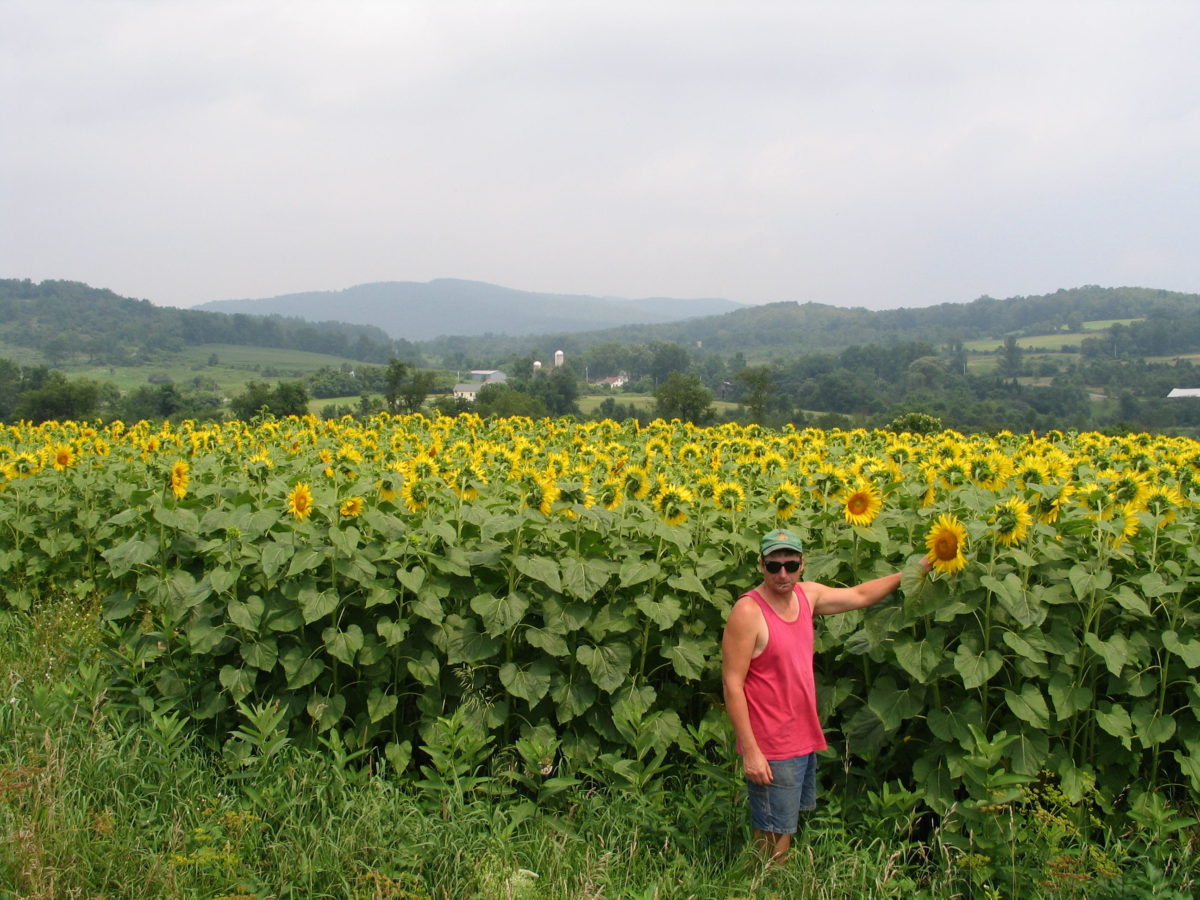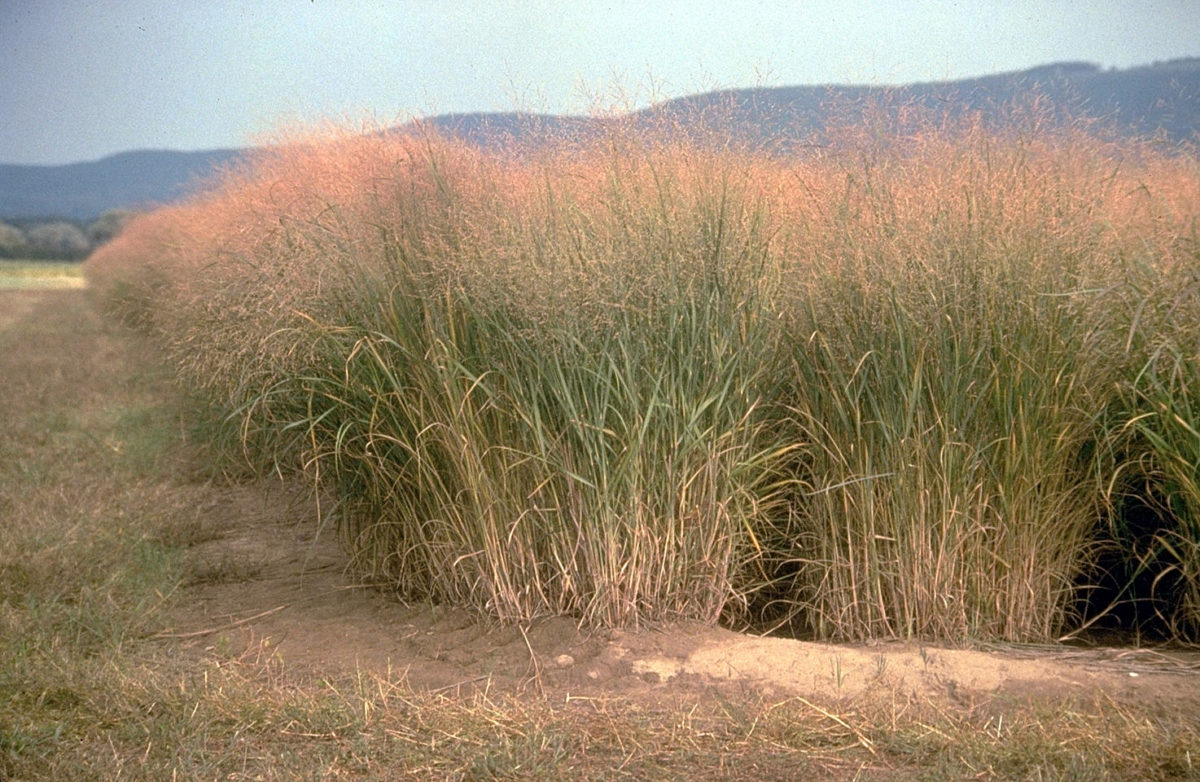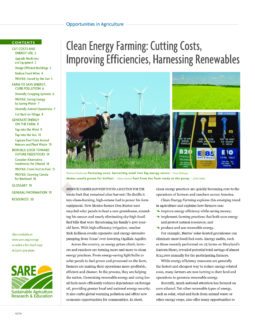“Bioenergy will be the biggest change in agriculture inour history,” said Gale Buchanan, USDA’s Undersecretary of Agriculture for Research, Education and Economics in 2007. In fact, change is already widespread across the Midwest, where corn is fetching record prices and the rapidly expanding ethanol industry has been a boon to many rural communities.

As far as biofuels are concerned, however, a clean energy future will not be limited to corn-based ethanol, but will include a wide variety of alternative energy crops, or feedstocks. Such feedstocks can be used for both ethanol and biodiesel, grown in varied climates and farming systems, and lead to more diversity on the farm. Also on the horizon are improvements in the conversion efficiency of existing feedstocks, such as wood and grass pellets.
Consider Alternative Feedstocks for Ethanol
Corn is currently the primary feedstock for ethanol because it is easy to grow, the conversion technology is well-developed, and a combination of government incentives and fuel prices ensure profitability. However, many other plant materials provide a much higher net energy gain for ethanol than corn. Research to develop these alternative feedstocks has been ongoing for many years and produced many suitable crops, yet challenges still remain to develop profitable conversion technologies.
Cellulosic biomass – the fibrous, woody and generally inedible portions of plant matter – is an emerging alternative feedstock. It comes from a wide variety of crops and offers positive environmental benefits. With the exception of crop residues, such as corn stover or wheat straw, most cellulosic material comes from perennial crops, which generally require less intensive planting methods, integrate well into existing rotations and provide better soil cover than annual row crops. Cellulosic crops, such as perennial grasses, poplar trees and alfalfa, allow for more diversity across the landscape and can be grown successfully in many areas, providing opportunities for growers across the United States.
Switchgrass for Ethanol
Already on the radar of many researchers, switchgrass was thrust into the spotlight when former President George W. Bush first mentioned it in his 2006 State of the Union address. Although currently almost no market exists for switchgrass as an energy crop, it is emerging as a leading contender for cellulosic ethanol production.

A long-lived perennial, switchgrass has positive attributes as a sustainable energy crop, because it can:
- extract soil nutrients efficiently, reducing the need for external inputs, and, with its extensive root system, store large amounts of below-ground carbon;
- thrive on less productive soils, reducing competition for more fertile ground that can be used to produce food;
- supply sufficient cover to curb soil erosion and provide good nesting habitat for birds and other wildlife;
- be harvested for forage in the spring and biomass in the fall, providing growers a double-income stream;
- adapt easily to the southern and central parts of the country;
- be established by no-till direct seeding into crop stubble or grass sod, further minimizing erosion and reducing soil carbon loss from tillage; and
- be grown easily by many farmers who already have the necessary planting and haying equipment.
Most current switchgrass research has focused on the grass’ use as forage and a buffer crop. Further work is needed to develop best management practices, integrate switchgrass into existing systems, and determine its economic feasibility as an energy crop. Switchgrass also has potential drawbacks, some of which researchers are currently addressing:
- Yields vary greatly, ranging from one to 16 tons per acre, creating uncertainty for growers.
- In certain regions of the country, switchgrass may act as an invasive species.
- Switchgrass establishment can be difficult in certain climates and farming systems.
- Tough switchgrass stems can puncture tractor tires.
While a perennial, such as switchgrass, is gentler on the environment than input-intensive row crops, monocultures of any crop reduce landscape diversity essential for wildlife habitat and healthy soil flora and fauna. They can also create higher risks for the producer, as they are susceptible to pathogen and insect infestations as well as market fluctuations. As the bio-economy continues to grow, farmers, researchers, agricultural educators and policy makers must all pay close attention to the balance between efficiency of scale and the benefits of environmental diversity, even with crops such as switchgrass.
Solid Fuels: Wood and Grass Pellets
For decades, Europeans have been burning grass for energy. But in the United States, the use of solid fuels, such as wood pellets and corn, has only recently seen a resurgence for home heating. Along the shores of Vermont’s Lake Champlain, Marshall Webb of Shelburne Farms is quite excited about the prospect of using a locally grown and readily available product – grass – to heat the farm.
“Our goal is to produce energy on the farm and become carbon neutral by 2020,” said Webb. The farm, a nonprofit educational center and a grass-based dairy of 125 pure-bred, registered Brown Swiss cows, has 150 acres of tough-to-harvest grass in wet and hilly areas. “We let these acres grow until mid-August, which allows the field nesting birds to fledge, and then harvest 100 acres for bedding, while the remaining 50 get mowed.” Those 50 acres and other potential neighboring land could produce enough heating energy from grass to satisfy winter demand, added Webb.
When the grass is mowed at the end of the summer, the nutrients are stored in the root mass and the sun has done all the necessary drying. “It’s the perfect timing,” said Webb. “We’ve looked at habitat restoration, and the birds are finished nesting in the grass. The equipment is all idle at that time, and we could conceivably save thousands of gallons of oil by burning the grass.” Even with the energy required to cut and pelletize the grass, the pellets’ output-input energy ratio is 12:1. The farm is awaiting final construction of a mobile grass pelletizer, which Webb envisions sharing with others in the community.
Like many feedstocks, grass pellets are still in a developmental phase as their higher ash content makes them more difficult to burn in standard wood-pellet or corn-burning stoves and furnaces. However, a number of corn, wood and biomass stove and manufacturing companies have modified equipment for grass pellets. According to researchers at Cornell University, grass pellets have excellent potential as a low-tech, small-scale, environmentally-friendly, renewable energy source that can be locally produced, processed and consumed.
Oilseed Crops for Biodiesel
Soybeans, because they produce high-priced meal and quality oil, have long held center stage as the predominant feedstock for biodiesel. But biodiesel can be produced from a wide variety of crops. From the Northeast to the Pacific Northwest, researchers are exploring a variety of oilseed crops, focusing on those that fit well into existing rotations and provide a higher net oil yield.
In Washington state, for example, Washington State University and USDA-ARS researchers have been studying safflower, mustard and canola, all of which fit well into existing dryland and irrigated rotations.
Canola uses planting and harvesting equipment similar to what is used for small-grain production, and the meal commands high prices in the feed market. Canola is an excellent rotation crop, doubling as both cover and energy crop because it:
- has deep, tough root systems that scavenge well for water and nutrients, and can break up hard pans;
- can be planted either in the fall or spring, although fall-planted crops tend to yield double, at least in the Pacific Northwest;
- is resistant to numerous pests such as the Russian wheat aphid, the Hessian fly and certain wheat diseases; and
- gels at lower temperatures than other feedstocks when converted to biodiesel, making it a more suitable fuel for colder regions.
Mustard has also been shown to be an excellent cover crop with high potential as a biodiesel feedstock. Although it produces less oil than canola, it is drought tolerant, grows well on marginal soils and contains compounds that act as a natural fumigant against soil pathogens. Mustard also suppresses nematodes and weeds, and, acting as a catch crop, provides fertility for subsequent crops. In recent years, its use as a soil fumigant has expanded significantly in the Pacific Northwest, in part due to research by Andy McGuire of Washington State University Extension, also a SARE state coordinator, who showed that incorporating mustard cover crops could save growers $100 per acre. Researchers in Vermont and Maine are also experimenting with growing canola and processing it into fuel. In SARE-funded trials, Extension specialists Peter Sexton, University of Maine, and Heather Darby, University of Vermont, were largely pleased with their initial yields, averaging from 1,100 pounds per acre for low-input systems to 1,700 pounds per acre for conventionally managed fields. Sexton cited the growing environment in Maine – no irrigation and untimely rainfall that can cause white mold – as a problem for yields, but added these could be readily addressed.
“We could do a little better,” said Sexton, referring to the first trials. “But it looks promising enough that we are pursuing it further.”
Producing Biomass for Energy: What You Need to Know
- What crops can you plant with the equipment, soil type and knowledge base you already have?
- What is the season of crop you are considering relative to season of energy demand?
- What kind of storage capacity do you have for the biomass?
- How much land can you safely dedicate to new and experimental crops?
- Can you use perennial and diverse cropping systems for bioenergy feedstocks?
- Do you have underused or marginal land that could be used for woody biomass or grass mixtures?
- Have you calculated the inputs needed for biomass crops? Energy crops should produce more energy than they require to grow and process.
- How can you integrate sustainable energy into a whole-farm plan?
(Adapted from a www.climateandfarming.org fact sheet.)
